
It only came in a handful of colors, and there were only a handful of options. It had one engine with one power rating mated to one transmission, with one suspension setup. It sold briefly, from 1958 to ’61. Today, though, you almost never see two examples of the Mk I Austin-Healey Sprite—aka the “Bugeye”—that are exactly alike. Why? It’s one of those automotive blank canvases, a car with personality that owners enhance and make their own with wild paint jobs, custom interiors, and drivetrain swaps. Because they’ve long been cheap ($1800 when new) and plentiful (50,000 built), Bugeyes have rarely been prized and preserved, so people do all sorts of things with them. It’s tough to blaspheme in this corner of the hobby.
Nobody knows this better than David Silberkleit, whose outfit, Bugeyeguys, has sold well over 400 Mk I Sprites and put its wrenches on hundreds more. (We profiled Bugeyeguys back in 2020, and Silberkleit lent us his lovely MGB GT for our MG at 100 feature in 2024.) To prove the versatility of this smiley-faced sports car platform, he invited me out to his Quonset hut. The mission: to sample three very different flavors of Bugeye from behind the wheel.
One is all about factory correctness and being as close to new as possible. One is about stretching the limits of the original car with speed parts and premium materials. And one is about maximum performance, usability, and reliability, with a 21st-century electric drivetrain. A brisk spring day and some curvy coastal roads in southern Connecticut greeted us, perfect for stretching the cars’ legs.
For those unfamiliar with the Mk I Sprite, the concept came from Donald Healey, who saw a gap in the market for young enthusiasts craving a nimble sports car but who didn’t quite have the scratch for a Triumph or MG. Designed at the Donald Healey Motor Company but built with parts from the British Motor Corporation (BMC) at the MG factory in Abingdon, the new Austin-Healey Sprite cost $1795 and was the cheapest genuine sports car you could buy. “It sets a new high in 948 c.c. performance … a new low in cost!” read one ad. For that low, low price, customers got no windows, no outside door handles, no trunk lid, and modest performance, but lots of fun. The headlights, originally intended to be retractable, were left fixed in the up position, giving it a permanent bright-eyed expression that earned it the nickname Bugeye (or “Frogeye” in Britain).
The Bugeye may have been built to be cheap, but that doesn’t mean it was built cheaply. The frame, for example, which is essentially a unibody with two chassis legs running forward from the passenger compartment, took inspiration from the Jaguar D-Type. It is remarkably stiff and was the first chassis of this type used in a mass-production sports car.
The Sprite debuted in Monte Carlo in 1958, just before the Grand Prix, and Bugeyes filled countless race grids, both on the amateur scene and at major international affairs like Sebring, Le Mans, and the Alpine Rally. After 1961, the Sprite got a more conventional “square body” shape and spawned a badge-engineered MG version called the Midget that lasted all the way up until 1979. But neither of them quite captured the spirit of the original, which has a more passionate, more active, and more creative fan base. That brings us back to the three cars we’ll be driving today.
First up, naturally, is the very first production Bugeye to roll off the factory line—Sprite AN5501.
It’s a testament to the Bugeye’s everyman, once semi-disposable nature that the first one ever built led a life that was surprisingly … typical. It didn’t go on a promo tour. It didn’t grace the pages of Road & Track. It never sparkled under the lights of a museum. It did what most Bugeyes did. It simply motored up on a boat to America (San Diego, specifically) and sold to a regular person of regular means looking for cheap, open-air fun. Soon, someone swapped out steel wheels for wires, sprayed on some orange paint, and used the seminal Sprite as a weekend club racer. By the late ’60s, it was non-operational and spent some time out in the elements. Then it sat inside from 1972 until 2012. Silberkleit had a chance to buy it then, but “501,” as he calls it, “had some data points that just didn’t add up.”
This was a U.S.-market, left-hand-drive car. The factory added an “L” to the chassis numbers of LHD Sprites, so this one should be “AN5L501,” but it isn’t. “So there was this car, I couldn’t see any evidence of the original green anywhere on it. It’s the wrong color, wrong wheels, it has a roll bar, it was raced and left in a ditch. It was an awful-looking thing that needed everything, plus there was this VIN issue, and the guy wanted a lot of money. I just wasn’t that comfortable buying it.” Silberkleit did make an offer, but someone else made a higher one, and so 501 went to Australia, where it received a restoration in its original Dark Green.
Silberkleit had the opportunity to buy 501 again in 2021, but there was still that missing “L” business. He called the folks across the pond at the British Motor Industry Heritage Trust, who have the build records for the British Motor Corporation and issue certificates showing a car’s specification as it left the factory. According to them, the first six production Sprites were indeed left-hand drive, and the missing letter was simply a typo, “a human error at the factory in Abingdon,” reads 501’s Heritage Certificate.
After Silberkleit pulled the trigger, 501 spent seven long, pandemic-era months on a shipping container before finally making it Stateside. Then, the team at Bugeyeguys had a monster of a challenge on their hands.
Although 501 hadn’t always been treated like a special car, it certainly is one. Silberkleit treated it to a concours-quality restoration to factory-correct specs, just as it would have looked in 1958. Timing was a factor, too; the national Austin-Healey Club judged concours in Pennsylvania was two months away when Bugeyeguys began the project, making for an all-hands-on-deck affair. Some jobs were easy enough, like swapping out the wire wheels and radials for the correct steelies and bias-plies, or the custom wood-rimmed steering wheel for a correct black two-spoke one. Others were a little tougher because every last painful detail mattered, down to the nuts and bolts. Literally.
Upon reassembling the entire car, the team replaced about 500 fasteners with new, period-correct ones. The seldom-seen but correct radiator is thinner than in later cars, sans side shrouds and fitted with a two-blade fan to (inadequately, it was later discovered) cool the 948-cc engine. An original-type battery topped with “helmet” terminals gives it juice.
Bugeyes didn’t come new with upholstery, per se, just a sort of ribbed rubber material that has long since deteriorated and been replaced with carpet on most Bugeyes still in existence. The team recreated the original rubber material and pattern as close as possible, but “at the concours, they just say hey, it’s not the original stuff, so points off,” says Silberkleit with a shrug. Despite that hiccup, 501 scored well enough for concours gold certification by the Austin-Healey Club. It’s an award winner at the Greenwich and Audrain concours as well.
Despite always loving them and having ridden in a few, the first Sprite built is also the first one I’ve actually driven. Getting in is a bit awkward, but for those familiar with tiny cars, none of these contortions are new. The seats wrap around you snugly but comfortably enough, while the gap for the door pocket and lack of any side window allow lots of room for your left elbow. The wide, flat dash, clear Smiths gauges, and delicate but straightforward controls have that charming blend of form and function found in any ’50s sports car, just on a smaller scale.
The top of the windshield surround serves as a stark reminder of just how small, hitting my torso-biased 6’2’’ frame at eye level. Slouching a bit—or sitting up extra straight—fixes this issue, though my back isn’t happy about it. At least there’s no worry about headroom, just the 60 or so miles of slightly overcast New England sky above. Meanwhile, the Mk I Sprite’s calling card—the headlights—are even more ever-present from behind the wheel, jutting up into my line of sight like two suns resting on an otherwise green horizon.
A gentle pull on the tiny black knob marked with an “S,” and the 948 wakes up with a healthy growl. Then, the roads outside the office park housing Bugeyeguy’s Quonset hut almost immediately turn into the narrow roads with gentle curves and hills where cars like this shine. A passing Civic looks as big as an F-150 from the seat of a Sprite, but the immediate and certainly reassuring first impression is just how tight and stout it all feels. Many body-on-frame British roadsters of old can have a shudder and scuttle-shake over bumps and rough roads, but the Sprite’s monocoque-type frame goes over them with firm confidence and no hint of flimsiness or fragility. The car also feels almost square, given its wide cockpit combined with a short wheelbase and overall length. It’s as if your ass is on the rear axle and your toes are on the front. If you look at someone driving a Bugeye from the side, that isn’t too far from the truth.
The Morris-derived rack-and-pinion steering is remarkably light and direct, though the massive steering wheel saws the top of my legs a bit through bends. The body rolls plenty but neutrally through sharp ones, and the narrow bias ply tires get loose at the back a lot easier than the modified Bugeyes driven later in the day. The drum brakes obviously require a firmer right foot and a bit more mindfulness than you might expect from a 1500-pound car, but they’re adequate on a spirited drive. And since the whole point of this car is as a sort of time machine to 1958, you can’t really complain about its 1958 limitations.
The correct BMC four-speed has a non-synchro first gear, and you generally have to be deliberate and mindful with shifts. The action itself is lovely, rewarding a smooth up or downshift with a direct, mechanical sense of satisfaction. My size 13s have no real issue working the pedals, but if we were going all-in at a race track they might. The all-stock engine returns 43 horsepower at 5200 rpm and just 52 pound-feet of torque, enough to push 501 to a quoted top speed of 83 mph and to 60 in about 20 seconds. That sounds positively lethargic, but the car itself feels eager and certainly not gutless. Even with 501’s double-digit output and antiquated setup, it’s endless entertainment to pop down a gear, crank the wheel, gun the raspy A-Series around a bend, and repeat. They call cars like this “tossable” for a reason.
Given the Sprite’s cheaper-than-anything price, its popularity with aspiring racers, and the pros/cons of the platform itself, people have been modifying it since the very beginning. Customized ones are far more common in Bugeye-world than obsessively correct cars like 501, and there are no purists in this world to offend.
Probably the coolest Bugeye build I’ve ever seen is the next car in the lineup, one given the nickname “Gumby.”
Gumby is the car Silberkleit bought in 1978 when he was in high school, for $1100. It’s also the one that kickstarted this lifelong love affair with Sprites. It was ratty then, but after Bugeyeguys sold their 200th car, Gumby got a serious makeover in both the looks and performance departments to make it a tasteful custom. The metallic green paint and stripes are clear departures from factory-correctness, but they’re gorgeous. The wheels are color-matched, as is the windshield frame, along with a custom headrest fairing and special wood-rimmed steering wheel. Factory seats were all vinyl, but these have lovely pale green German leather hides, piped in silver and with white contrast stitching, arranged in a diamond pattern on the seats. The leather and stitching extend to the dash as well.
Gumby has served as a testbed at Bugeyeguys to try various setups and performance parts, but in its current iteration it boasts a 1275-cc version of the A-Series that would have come in a later square-body Sprite, fed by a supercharger and single carburetor. It shifts through a Datsun 210 five-speed, which, along with the Ford Sierra’s five-speed, is a common swap. Gumby stops via the front disc/rear drum combo seen on most souped-up Sprites. There is also LED lighting front and rear, which is a welcome (and safe) addition. In modern traffic, the original factory taillights look like two tiny laser pointers at a rave.
If sitting in 501 feels special given its history, sitting in this car feels premium because of the materials used and the attention to detail. From our first scenic small-town stop, the starting procedure is the same, and we’re off. Straight away, this is an easier car to drive, with a more responsive brake pedal, grippier tires, sharper turn-in, flatter cornering, and a smaller-diameter steering wheel that is easier to work. That Japanese gearbox is idiot-proof, too; the shifter offers short throws, goes immediately where you want it to, and does does quickly. No real finesse required.
Earlier, when looking at it under the hood, we couldn’t help but joke that the supercharger looks nearly as big as the whole engine, but it is relatively a low-pressure affair at around three pounds of boost. That’s still good for somewhere in the neighborhood of 100 hp, which is more than twice what 501 makes. No surprise, the blown Bugeye is much faster. There is more punch at any speed, and it comes alive even more when you’re really on it, with an extra rush at about 4000 rpm. There’s no obnoxious supercharger whine, which would sound out of place here anyway—just classic A-Series snarl.
As the total package, this does everything like the first car does. It just does it all a little better (or in some cases a lot better). This Bugeye is more dialed in, more responsive to inputs, more exciting. If in some alternate reality, BMC put more serious money and development behind the Bugeye, Gumby would have been something like a “Competition” or end-of-series model, while 501 would have been the plucky but pure early-series base car.
A massive chunk of Silberkleit’s business is taking wayward Sprites and improving them in dozens of little ways, with all of his accumulated knowledge, to make them more reliable and easier to use. But no matter how many of these little fixes there are, he’s still dealing with 1950s English automobiles and mostly 1950s technology. That means leaks, failures, and frequent troubleshooting.
Since a significant part of Bugeyeguys’ customer base loves the character of these cars but would rather have one that’s trouble-free, an EV swap is a rational, if controversial choice. So far, Silberkleit has built five examples of the so-called “FrogE.”
Sure, tearing out the Healey’s heart might seem like sacrilege, even for a car as commonly modified as this. But—and this is the fair argument we’ve heard from other shops that EV-swap classics—electrifying these cars is one way to help keep them on the road, to be enjoyed by people both inside and out, for the foreseeable future.
From a few paces away, Bugeyeguys’ latest FrogE build looks like any other Sprite, but a close eye reveals some details—the 220-volt plug under the fuel filler cap or the badge on the nose, which isn’t the usual Austin-Healey one but the lightning bolt motif originally found on the Sprite’s steering wheel. Inside, the shift knob is missing, the hole for which is now filled with a single cupholder and the function for which is now handled by a knob near the steering wheel, reading “R,” “N,” and “D.” A screen on top of the transmission tunnel shows functions like battery life, and though there’s a convincing analog Smiths-style speedometer, it’s in reality a GPS-reading modern unit with a digital screen at the bottom that gives odometer readings.
What propels the FrogE are five Tesla batteries, lifted from wrecked Model Ss. The wafer-like rectangular stack of three up front mounts longitudinally, sort of like the old gas engine, and there are two more mounted sideways in the trunk. The space under the Sprite’s one-piece hood is a tidy mix of boxes and large wires. They look a bit alien in a space normally occupied by a valve cover, radiator, and carbs. There are some nods to the old mixed in with the new, though, like the fly-by-wire throttle actuated by the original throttle cable assembly. The electric motor, meanwhile, nestles in where the transmission used to be.
EV drivetrains are rather hefty, but so was the original iron-block four-cylinder and gearbox, so the FrogE’s weight—and the distribution of that weight—is not far off from a gas-powered Sprite. Given all the extra EV oomph, the suspension has been upgraded and disc brakes mounted up front, but these changes aren’t any different from what people do to other fast Sprites.
Visually, it retains almost all the character of an original Bugeye, which was the goal. From behind the wheel, aside from the shifter-turned-cupholder and the handful of gizmos in the cockpit, the most noticeable difference before setting off is the silence. After twisting the key and turning the knob to “D”, the burbles and vibrations (and occasionally smells) of an old English car just aren’t here. There are only a few hollow clicks, then silence, and the FrogE is ready to go.
And by ready, I do mean ready. No checking oil pressure, no waiting for anything to come up to temp. From our seaside stopping point, the 65-year-old sports car sets off with the smoothness of any EV made today. At casual driving speeds, though, this Bugeye feels almost exactly like the other two. The extra weight of the batteries is imperceptible since there isn’t much of it, so the steering is just as light and direct as before. If the mission was to retain as much as possible the original character of a Bugeye, then mission accomplished.
As for what is different, there’s noticeable but not excessive regenerative braking. It makes traffic more tolerable, at least, especially combined with the lack of a gearbox. “Torque” is the magic word for EVs and their proponents, and the FrogE certainly has plenty of it. But the way its drivetrain is tuned (programmed?), it doesn’t come on all at once. There’s none of that jarring, shove-in-the-middle-of-your-chest sensation off the line that you get with some electrics. No Ludicrous Mode here. Instead, the power delivery is rather gradual. From a dead stop it almost feels sluggish, but thrust builds before you can dwell on that feeling. Even with this setup, the FrogE will hit 60 mph in about eight seconds—lightning fast in Sprite terms.
Once it hits about 40, the motor gets eager to pull and it just never seems to run out of breath. On the roads we’re traveling, at least, the FrogE always feels like it has more to give. While not every Bugeye is cut out for interstate duty, and a clapped-out car can be downright scary on the highway, a quick 50–70-mph spurt is effortless in this one. Other than an electric whir that is not at all unpleasant, it’s quiet and easy. I’d be lying if I said I didn’t miss an exhaust note and rowing gears, but the FrogE makes up for it with much more power and peace of mind. Silberkleit says a full charge is good for about four hours of driving, which seems like more than enough. He also says it’s by far the fastest Bugeye they’ve built. I believe it.
It’s something of a car article cliché to gather three different cars and conclude with “there’s no wrong answer here,” but each of these Sprites really is great in its own way. And gathered together, rolling into small towns as a trio, they brought more thumbs up, honks, smiles, and waves than I’ve ever received from behind the wheel.
Combined, these three roadsters have less power than an EcoBoost Mustang and weigh less than a Chevy Traverse, but each one has a personality that outshines countless faster, more valuable vehicles.
As an authentic old-car experience, 501 is about as legit as it gets. There’s a purity to it, and there’s some real history there, but it’s so fun to drive that you almost forget about the significance. Gumby is the nicest to look at and the most entertaining behind the wheel. Its cosmetic changes and performance upgrades are major departures from originality, but they don’t stray too far from what makes a regular Bugeye great. As for the FrogE, it offers easy speed and trouble-free motoring. A decent chunk of the charm is gone, but driving it is surprisingly similar to the other two while offering some serious advantages.
No matter what flavor a Bugeye comes in, it delivers serious sports car chops, a timelessly delightful shape, and an unpretentiousness that is sometimes lacking in the old-car hobby. All of that makes it easy to fall in love with one. Or three.








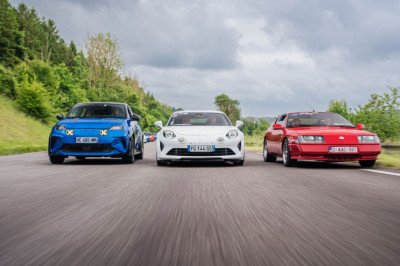


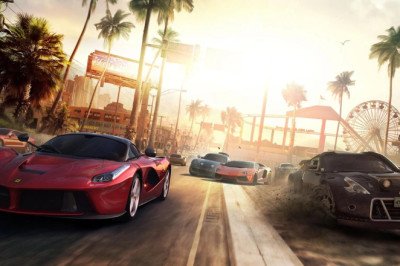
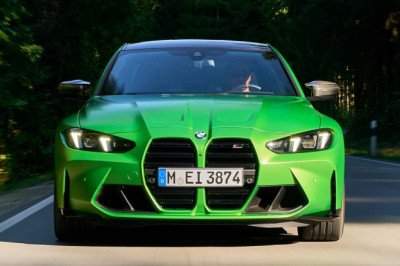
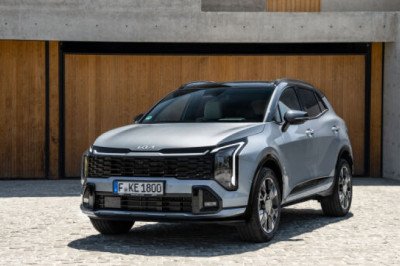
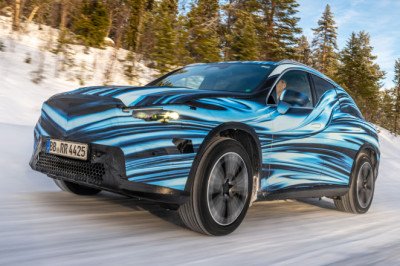
Facebook Conversations